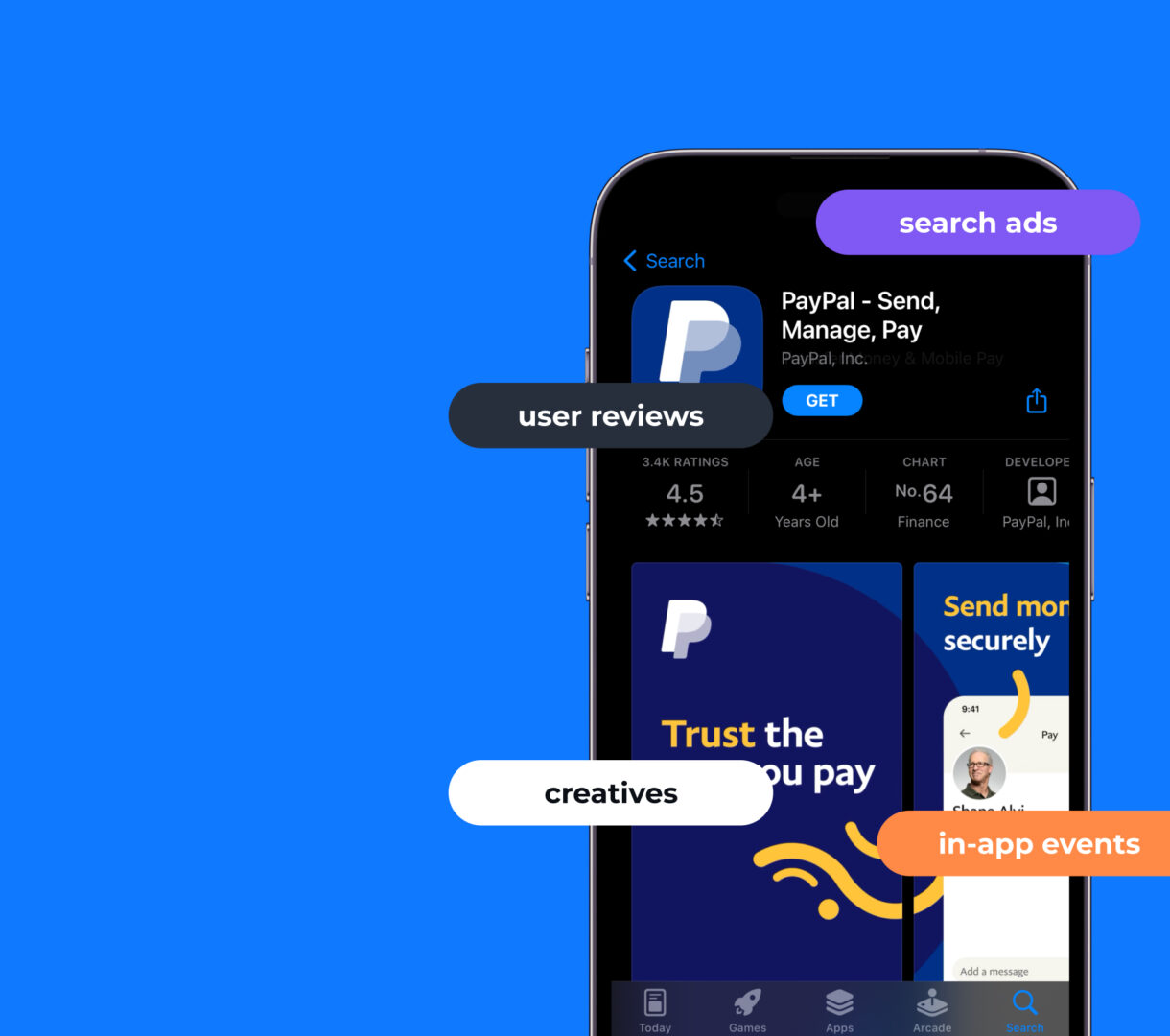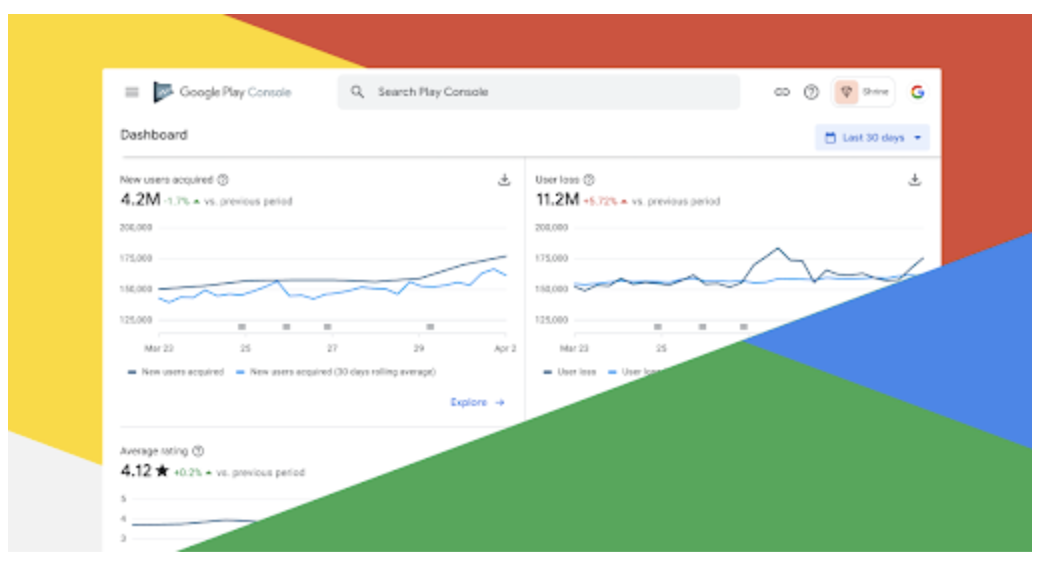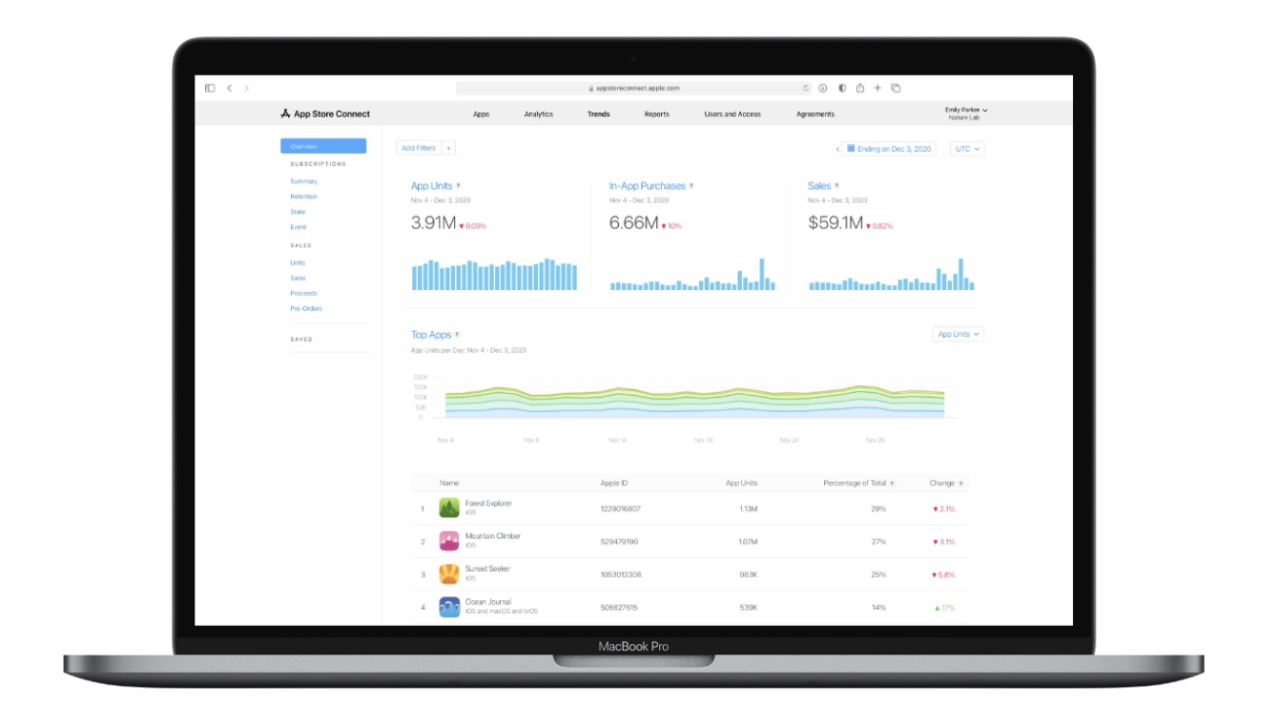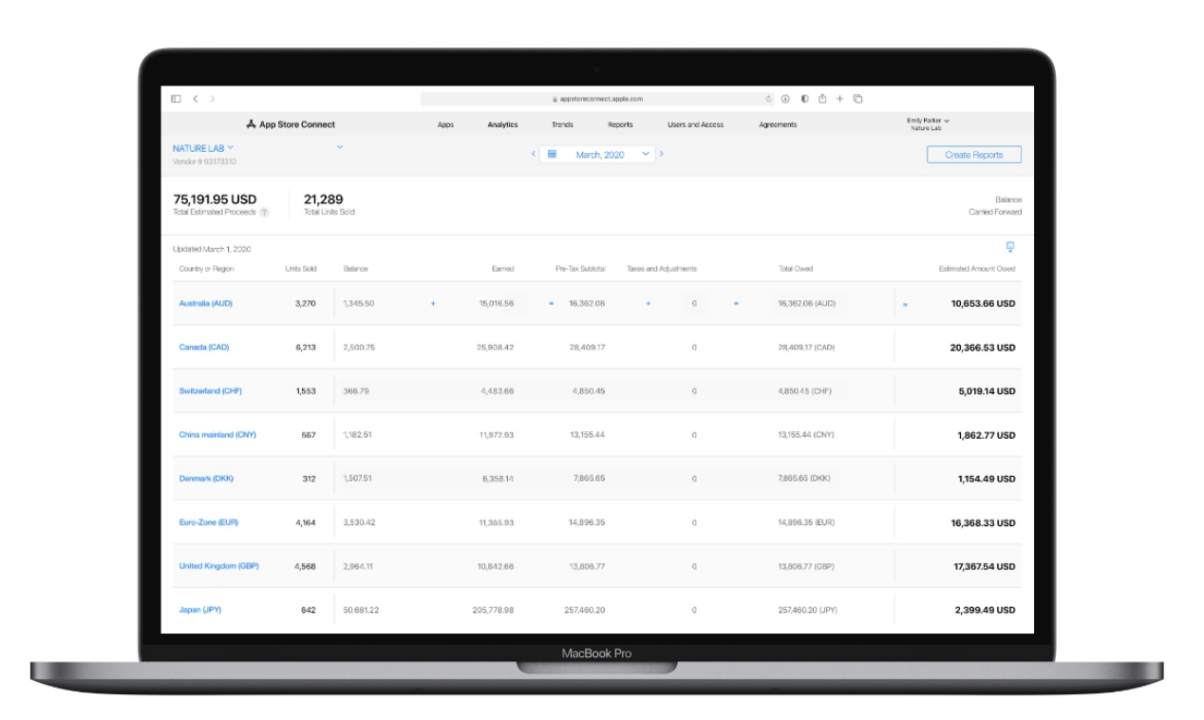
Are you struggling to get your app noticed among millions of others in the app stores? With countless apps vying for user attention, simply launching a great app isn’t enough.
The key to success lies in understanding how users interact with your app and what drives its downloads. This is where app store analytics come into play.
By mastering the art of app store analytics, you can unlock the secrets to improving your app’s visibility, increasing downloads, and ultimately, driving revenue. In this post, we’ll dive deep into how you can leverage app store analytics to supercharge your app’s performance.
What are App Store Analytics?
App store analytics refer to the tools and data provided by platforms like Google Play Console and Apple App Store Connect that allow developers to monitor and analyze the performance of their apps. These analytics offer valuable insights into how users discover your app, how they engage with it, and how various factors impact your app’s success in the store.
By understanding these metrics, you can make informed decisions on how to optimize your app’s performance, from tweaking your marketing strategies to improving user experience. App store analytics go beyond just download numbers; they reveal patterns in user behavior, the effectiveness of your promotional efforts, and even potential issues that might be hindering your app’s growth.
App Store Analytics in Google Play Console
Google Play Console provides a comprehensive suite of tools for app developers to analyze their app’s performance. Here’s how it works:
Google Play Console Overview
Google Play Console is the go-to platform for Android developers to manage and monitor their apps. It offers a wealth of analytics data that helps you understand how your app is performing on Google Play. With features like user acquisition reports, Android vitals, and crash reporting, developers can gain deep insights into their app’s health and user engagement.
Key Features of Google Play Console Analytics:
- User Acquisition Reports: These reports show you where your users are coming from, whether it’s organic searches, paid campaigns, or referrals from other apps. This data helps you refine your marketing strategies and focus on the channels that drive the most downloads.
- Android Vitals: Android Vitals help you track and improve the technical performance of your app. Metrics like crash rates, ANR (Application Not Responding) rates, and battery usage are crucial in ensuring a smooth user experience. Poor performance in these areas can lead to negative reviews and lower rankings.
- Store Performance: This section allows you to see how your app is performing in the Google Play Store. It provides data on impressions, conversion rates, and user ratings, which are essential for understanding how well your app resonates with potential users.
- Crash Reporting: Google Play Console’s crash reporting feature helps you identify and fix issues that cause your app to crash. By analyzing this data, you can prioritize fixes and updates that will enhance stability and improve user satisfaction.
- Subscription Reports: For apps with subscription models, these reports give insights into subscriber acquisition, retention, and churn rates. Understanding these metrics is key to optimizing your subscription offerings and increasing revenue.
App Store Analytics in Apple App Store Connect
Apple App Store Connect is the central hub for iOS developers to manage their apps. It offers a robust set of analytics tools designed to help developers understand how users are interacting with their apps and how their marketing efforts are performing.
Key Features of App Store Connect Analytics:
- App Store Performance: App Store Connect provides detailed insights into how users discover and engage with your app. You can track metrics like impressions, page views, and downloads to understand how effective your app’s metadata and marketing campaigns are in attracting users.
- Marketing Campaigns: This feature allows you to measure the success of your marketing campaigns by tracking downloads from specific sources such as social media, email, or paid advertising. By creating unique links for each campaign, you can determine which channels are most effective in driving downloads and adjust your strategies accordingly.
- App Engagement and Usage: Track how users interact with your app over time. Metrics like active devices, sessions, and retention rates help you understand user behavior and identify areas where the app experience can be improved.
- In-App Event Performance: If you host in-app events, this feature allows you to analyze their impact on user engagement and downloads. You can view data by territory, device, and source type to get a detailed picture of how events contribute to your app’s success.
- Pre-orders and Peer Group Benchmarks: Understand how many users pre-order your app and compare its performance against similar apps using peer group benchmarks. These benchmarks provide valuable context and help you identify strengths and weaknesses in your app’s performance.
Why App Store Analytics Are Crucial for Improving Your App’s Performance
App store analytics are essential for several reasons:
- Data-Driven Decisions: Analytics provide the data you need to make informed decisions about your app’s development, marketing, and updates. Instead of relying on guesswork, you can base your strategies on real user behavior and performance metrics.
- Identifying Growth Opportunities: By analyzing user acquisition and engagement data, you can spot trends and opportunities for growth. Whether it’s expanding into new markets or optimizing your app for better performance, analytics help you identify where to focus your efforts.
- Improving User Experience: Understanding how users interact with your app allows you to make targeted improvements that enhance the overall user experience. This leads to higher retention rates, better reviews, and more downloads.
- Maximizing Revenue: For apps with in-app purchases or subscriptions, analytics are crucial for optimizing your monetization strategies. By tracking metrics like average revenue per user (ARPU) and conversion rates, you can refine your offerings to increase revenue.
- Staying Competitive: The app market is highly competitive, and staying ahead requires continuous optimization. By leveraging analytics, you can keep up with changes in user behavior and app store algorithms, ensuring your app remains competitive.
What Key Metrics to Track in App Store Analytics
When it comes to app store analytics, not all metrics are created equal. Here are the key metrics you should focus on:
- Impressions: The number of times your app’s page is viewed in the app store. This metric indicates the visibility of your app.
- Downloads: Tracks the number of times your app is downloaded. This is a fundamental metric for understanding your app’s popularity.
- Conversion Rate: The percentage of users who download your app after viewing its page. A low conversion rate may indicate issues with your app’s metadata or marketing.
- Retention Rate: Measures how many users continue to use your app over time. High retention rates are a sign of a valuable and engaging app.
- Session Length: The average duration of user sessions in your app. Longer session lengths generally indicate higher engagement.
- Crash Rate: The frequency of app crashes. A high crash rate can lead to poor reviews and decreased user retention.
- User Acquisition Cost (UAC): The cost associated with acquiring a new user. This metric helps you evaluate the effectiveness of your marketing spend.
- Average Revenue Per User (ARPU): The average amount of revenue generated per user. This is particularly important for apps with in-app purchases or subscriptions.
How to Use App Store Analytics to Boost Your App’s Performance
Now that you understand the key metrics, let’s explore how you can leverage app store analytics to elevate your app’s performance, complete with practical examples:
1. Optimize Your App’s Metadata
Your app’s metadata—such as the title, description, and keywords—significantly impacts how it’s discovered in app stores. Use app store analytics to track the effectiveness of your metadata by observing changes in rankings, impressions and downloads.
Let’s say you’ve noticed through Google Play Console that your app’s impressions are high, but downloads are stagnant. This suggests users are finding your app, but something is preventing them from downloading it.
You decide to A/B test different descriptions: one focuses on the app’s features, while the other emphasizes user benefits. After a few weeks, analytics show that the benefit-focused description led to a 15% increase in downloads.
This data-driven insight allows you to refine your metadata further, such as incorporating high-performing keywords that align with the new description.
2. Refine Your Marketing Strategies
Analytics from marketing campaigns can reveal which channels are most effective in driving downloads and attracting high-quality users. Focus your budget on these channels and tailor your messaging to resonate more with your target audience.
Imagine you’re running campaigns across multiple platforms like Facebook, Google Ads, and influencer partnerships. By tracking campaign performance in Apple App Store Connect, you notice that downloads driven by Google Ads have the highest conversion rate and lowest user acquisition cost (UAC).
Conversely, influencer partnerships are bringing in users who churn quickly. With this insight, you can allocate more budget to Google Ads, refine your ad creatives, and either rethink or optimize your influencer strategy by selecting partners who better align with your app’s niche.
3. Improve User Experience
Engagement and retention metrics are critical for identifying where users might be dropping off. Use this data to make targeted improvements to your app’s user experience.
To give you an example, your app’s session length metrics show that users drop off during the onboarding process. Delving into the data, you see that the second screen—where users are required to fill out lengthy information—has a high exit rate.
In response, you streamline the onboarding process, reducing the amount of information required upfront and implementing tooltips to guide users. After making these changes, you notice an increase in session length and a 10% improvement in the Day 1 retention rate.
4. Enhance In-App Events
In-app events can boost engagement and drive downloads, but their effectiveness varies. Use analytics to track how different events perform and adjust your strategies accordingly.
Suppose you’ve launched an in-app event for your gaming app, offering double rewards for completing certain levels. Analytics from Google Play Console show a spike in daily active users (DAUs) but only a modest increase in in-app purchases (IAPs).
You tweak the event by introducing limited-time exclusive items that can only be purchased during the event.
The result? A 25% increase in IAPs and higher engagement throughout the event’s duration. This success can guide the design of future events, focusing on strategies that drive both engagement and revenue.
5. Monitor and Reduce Churn
Churn is the rate at which users stop using your app. By monitoring retention rates and reasons for uninstalls, you can identify and address the causes of churn.
To see this in action, let’s say your retention metrics reveal that users often uninstall your app within the first week. You dive deeper into the data and discover that many uninstalls occur after users encounter a specific feature that’s difficult to navigate.
In response, you simplify this feature’s interface and add a tutorial. Post-update analytics show a significant reduction in uninstalls and a corresponding increase in Week 1 retention rates, indicating that the changes effectively addressed the issue.
6. Leverage Peer Group Benchmarks
Comparing your app’s performance to similar apps provides valuable insights into areas where you may be underperforming. Peer group benchmarks can guide you in adopting best practices to enhance your app’s standing.
To help you better understand how this works, imagine you’ve noticed through peer group benchmarks that your app’s crash rate is higher than that of similar apps. To address this, you prioritize stability improvements and release an update focused on bug fixes.
After the update, your crash rate drops to below the benchmark average, leading to better user reviews and a gradual improvement in your app’s ranking. This comparison helped you identify a critical issue and take action to align your app with industry standards.
7. Experiment and Iterate
App store analytics provide a wealth of data that you can use to experiment with different strategies. Whether it’s A/B testing your app’s icon or introducing a new feature, analytics allow you to measure the impact and iterate based on results.
A good example of this is if you’re considering a redesign of your app’s icon to make it more modern and eye-catching. Using A/B testing tools in Apple App Store Connect, you create two versions of the icon: one with your current design and one with the new design.
Over several weeks, analytics show that the new design results in a 12% increase in conversion rates from impressions to downloads. This data gives you the confidence to roll out the new icon universally, knowing it will positively impact your app’s performance.
By applying these strategies, you can effectively use app store analytics to optimize your app’s performance, ensuring it not only reaches more users but also provides them with a seamless and engaging experience.
Boost Your App’s Performance Now
App store analytics are a powerful tool for any app developer looking to boost their app’s performance. By understanding and leveraging these insights, you can optimize your app’s visibility, improve user experience, and maximize revenue.
However, navigating the complexities of app store analytics can be challenging. That’s where ShyftUp comes in. With their expertise in user acquisition and app marketing, ShyftUp can help you analyze your data and develop winning strategies that drive results. Don’t leave your app’s success to chance—partner with ShyftUp today and take your app to the next level.
App Store Analytics in Google Play Console
Key Features of Google Play Console Analytics:
App Store Analytics in Apple App Store Connect
Key Features of App Store Connect Analytics:
Why App Store Analytics Are Crucial for Improving Your App's Performance
What Key Metrics to Track in App Store Analytics
How to Use App Store Analytics to Boost Your App's Performance
1. Optimize Your App’s Metadata
2. Refine Your Marketing Strategies


